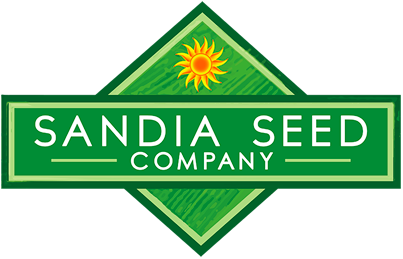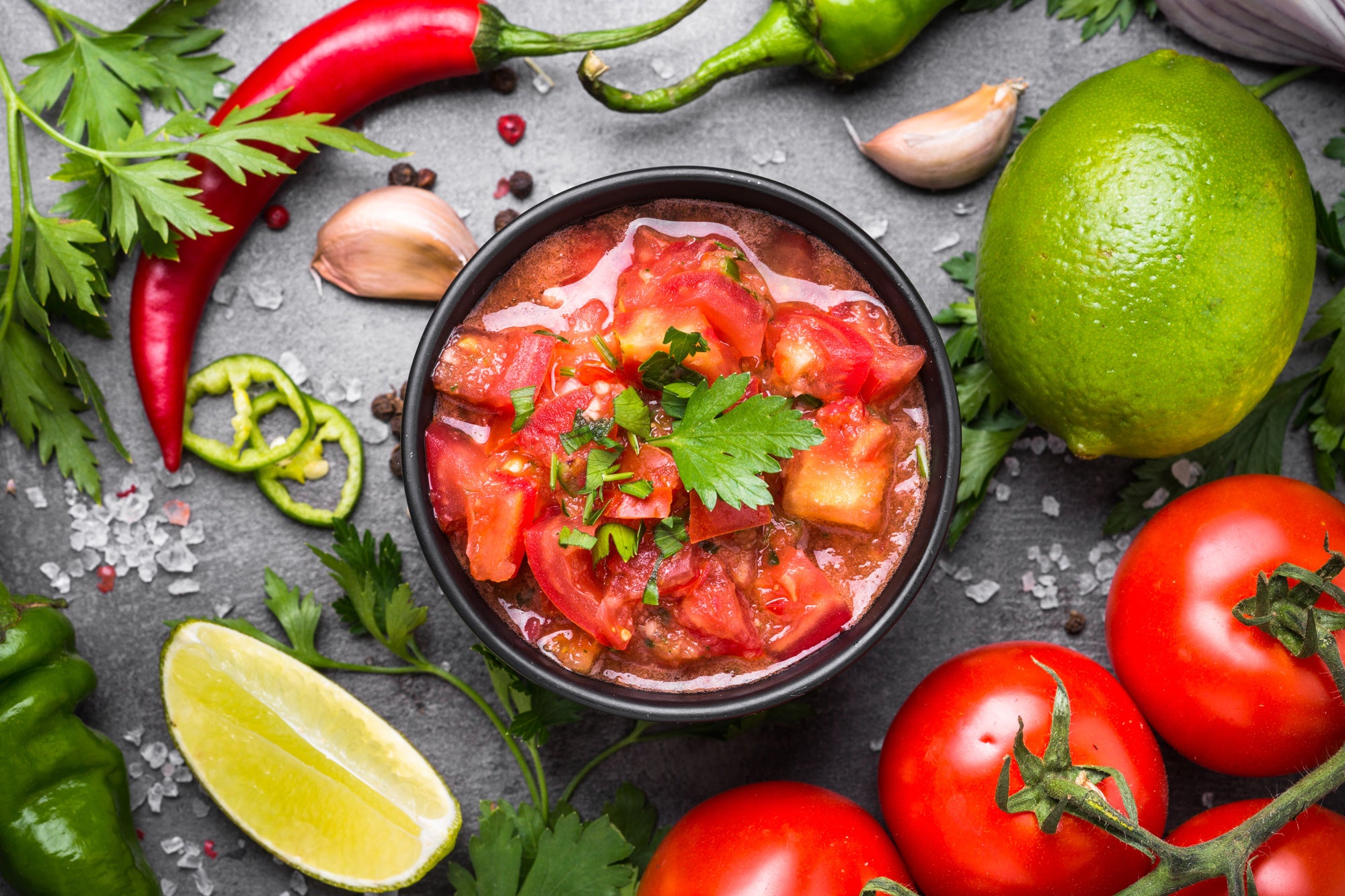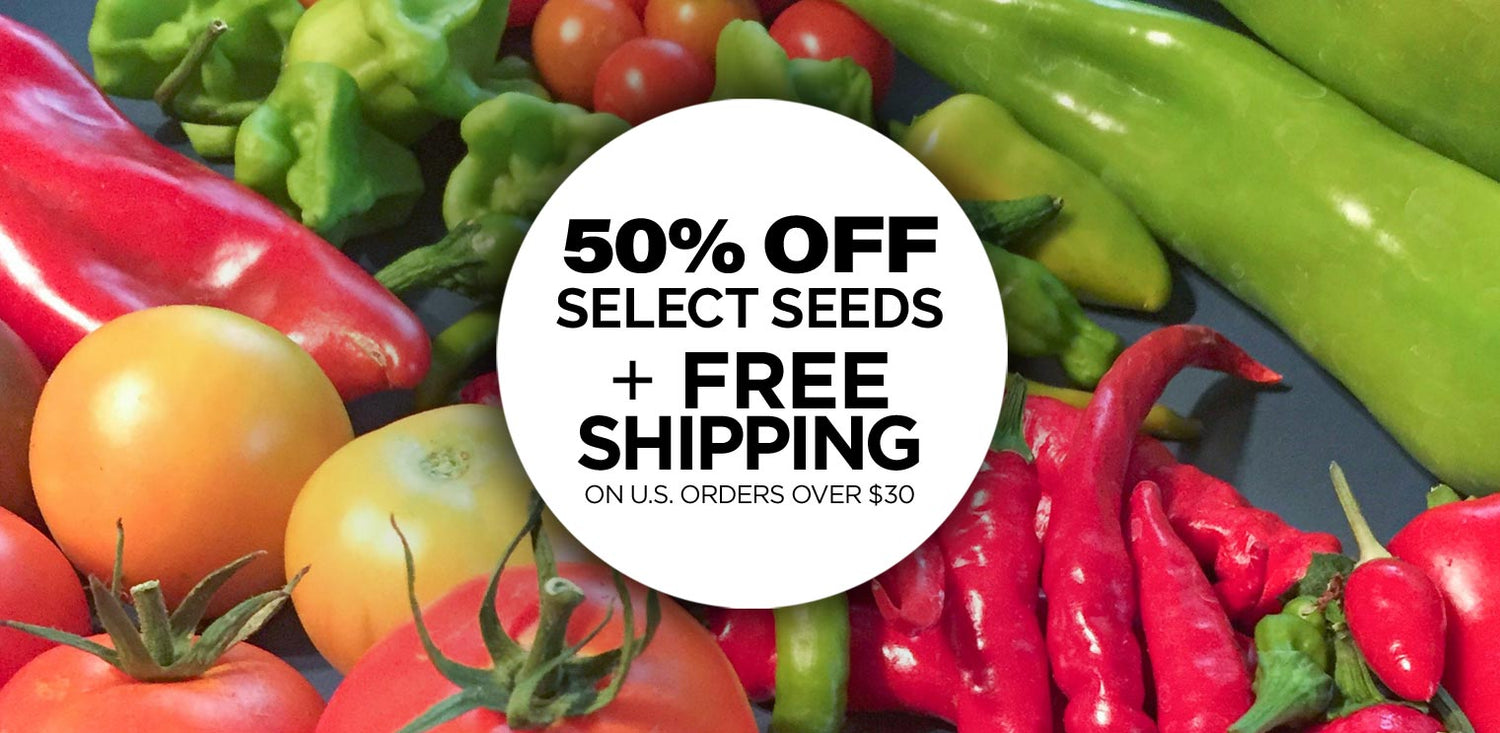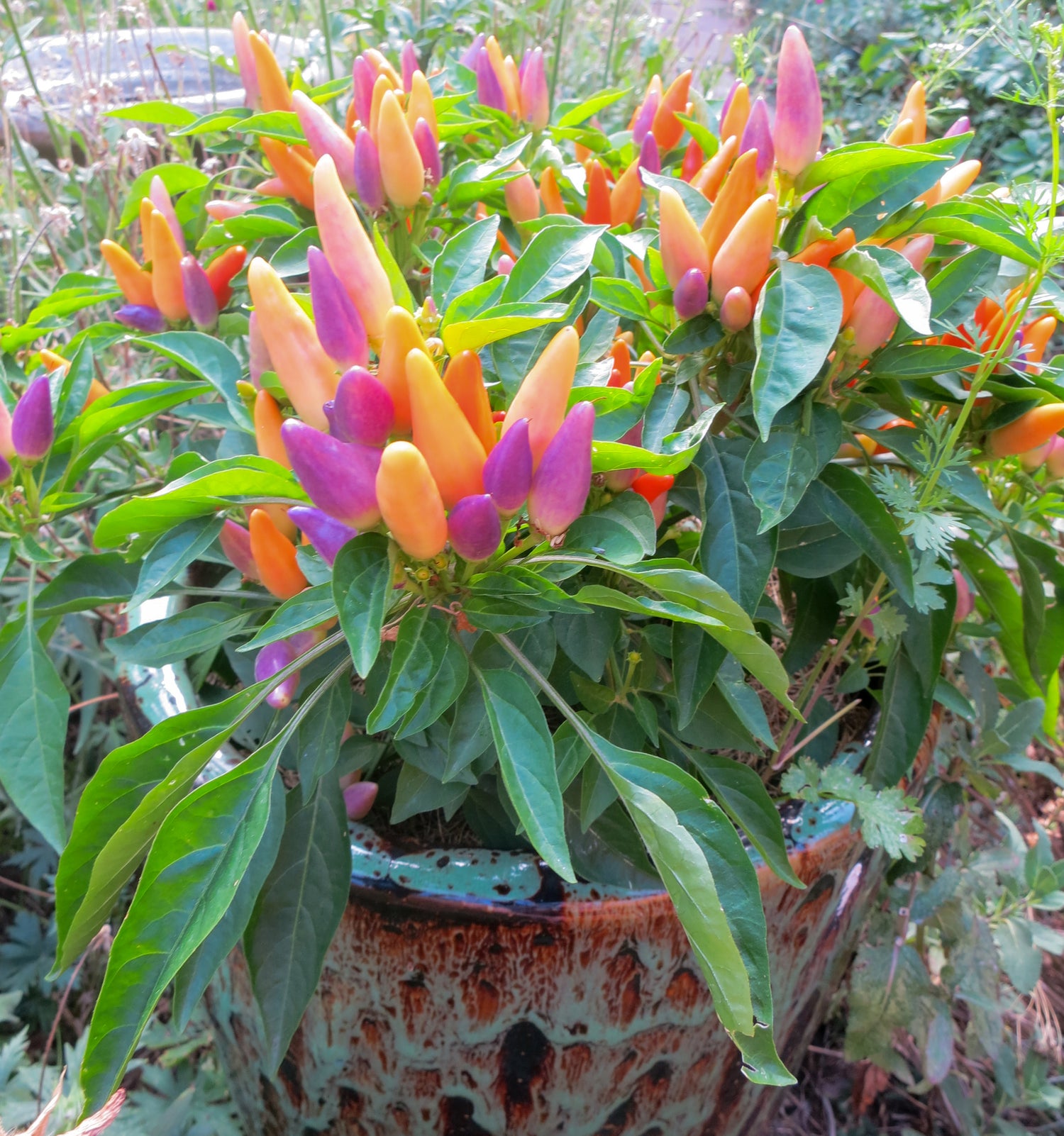
Peppers and vegetables love compost! Compost is nature's FREE fertilizer. Adding this rich organic material to your soil will help your vegetable plants grow larger and more bountiful. In fact, many organic gardeners use only compost to fertilize their vegetables.
Rather than buying the bags of compost in the store – save plastic and money, plus recycle your household and landscaping waste by making your own compost. Homemade compost is also filled with a ton of living soil microorganisms unlike store-bought bagged compost, which is so much more beneficial for your vegetable plants. Store-bought compost is often produced at very high temperatures, which kills beneficial microorganisms, while homegrown compost teems with living soil organisms that improve soil structure and plant health.  Who Feeds The Plants? Microbes!
Who Feeds The Plants? Microbes!
Microorganisms, especially bacteria and fungi, are what feed our plants, as they break down organic matter (like decomposing leaves) and release essential nutrients like nitrogen, phosphorus, and potassium into the soil that can then be utilized by plants. The more diversity of life you have in our soil, the more your vegetable garden will thrive.

Composting is easier than you think, here are our tips:
- Find an area in your yard to either build a compost bin out of pallets, or place a purchased bin – you can even simply pile up debris without installing a thing!
- Add brown and green materials such as leaves, twigs, plant trimmings, and grass clippings, making sure larger pieces are chopped or shredded.
- Make sure to add water and keep your compost moist, but not soggy. Dry compost bins simply don't break down, and soggy ones rot and have more odors.
- When adding vegetable or fruit peels and waste, bury them about 10 inches under compost material to deter scavengers like raccoons.
- Add eggshells! They are a great source of calcium for plants as they break down.
- Add your old Halloween pumpkins to your compost!
- To avoid scavengers and strong odors, don't add scraps of meat, fish, fat or cheese to your compost.
- Seeing worms is a good sign! Worm poop is the best thing ever for plants and they make compost piles GREAT. If you see ants in your compost, that means it's too dry.
- You can also add used paper and cardboard, tear or shred it up – it makes for great worm food!
- Covering your compost with a tarp or lid will help keep it moist, but is optional. When the material at the bottom is dark and rich in color, your compost is ready to use. This usually takes anywhere between two months to two years.
- Turn the compost often, using the richest dark brown compost at the bottom of the pile to add to your garden beds, and then turning the rest so it's well mixed and will decompose more quickly.
- It is recommended that you layer different types of debris for the most effective composting. Start by spreading a layer that is several inches thick of coarse, dry brown stuff, like stalks or leaves. Then, top that with several inches of green stuff like grass clippings. Then add a thin layer of soil. Finally, add a layer of brown stuff. Moisten the three layers, and repeat throughout the seasons!
- Want some compost bin building ideas?
Check out these 18 DIY Compost Bin Designs »
- Growing chile peppers? Find lots more of our top Pepper Growing Tips »

Did you know that you can compost your roasted chile skins and seeds?
Yes, worms like green chile, too.
Adding compost to your soil will create a lush and productive garden! When growing peppers and tomatoes, the soil should be deep, rich, and loamy. Adding compost every year will help build your soil with lots of nutrients and your green chiles will thrive!
Grow your own green chiles this year, we have some amazing varieties of: hatch green chile seeds, sweet pepper seeds, hot pepper seeds, SUPER hot pepper seeds, and beautiful and delicious heirloom tomatoes »

Happy growing!

Compost: Feed Plants with Plants:
When you compost your leaves, grass, food scraps and other garden debris, you're in essence creating plant food from plants. Putting this gardeners gold filled with earthworms and other soil creatures and life will feed your plants throughout the season! You can avoid fertilizer entirely if you have a garden bed that you are adding compost to regularly over the years. You'll find as you keep adding compost over the years, your soil will get fluffy and loamy and be filled with life and nutrients for your vegetable garden.
Happy Composting!



















